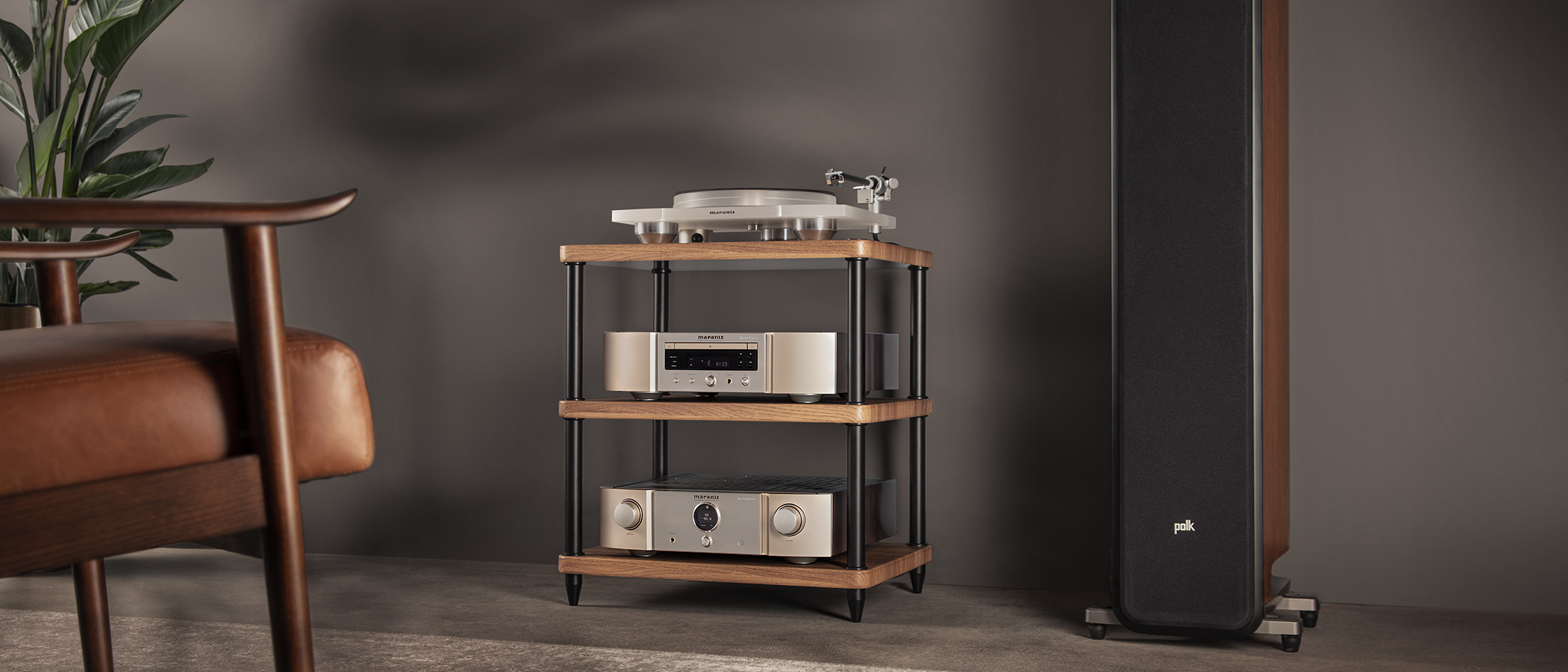What Hi-Fi? Verdict
With the exceptional care given to the build quality – inside and out – of this Special Edition SACD player from Marantz, it won't come as a surprise that this fidelity translates to the gorgeous sound it produces as well.
Pros
- +
Superb sound
- +
Doubles as USB DAC
Cons
- -
No control over voltage output
- -
No balanced outputs
Why you can trust What Hi-Fi?

This review and test originally appeared in Australian Hi-Fi magazine, one of What Hi-Fi?’s sister titles from Down Under. Click here for more information about Australian Hi-Fi, including links to buy individual digital editions and details on how to subscribe.
What is perhaps most special about the new Marantz SA-12SE SACD player is that for Japanese audiophiles, it’s not particularly special at all. Essentially, the new ‘Special Edition’ or ‘SE’ version of the SA-12 has apparently been available exclusively in Japan for some time now.
The difference is that Marantz decided to make it available on the world market. I have no knowledge of the reason for this change in the company’s approach, but I can’t help that it might have something to do with the death of Ken Ishiwata, who was instrumental in the establishment of Marantz’s Special Edition models, and whose name personally graced some of the ‘Signature’ versions.
Equipment
But Marantz says that the SA-12 Special Edition SACD player is more than just the version that was exclusively available in Japan. It says that before being released on the world market it was ‘tuned’ by specialist engineers at Marantz for superior performance. In the words of the company itself: “Our dedicated in-house Sound Masters occasionally identify products with higher potential than expected, then hone them into Special Edition models through extraordinary attention to detail.
"Drawing also upon achievements made while developing the acclaimed KI Ruby series, the Marantz Sound Master together with our European sound engineers have meticulously crafted the new 12 Series Special Editions." (The plural is used because Marantz has also released a specially tuned integrated amplifier, the SA-12SE.)
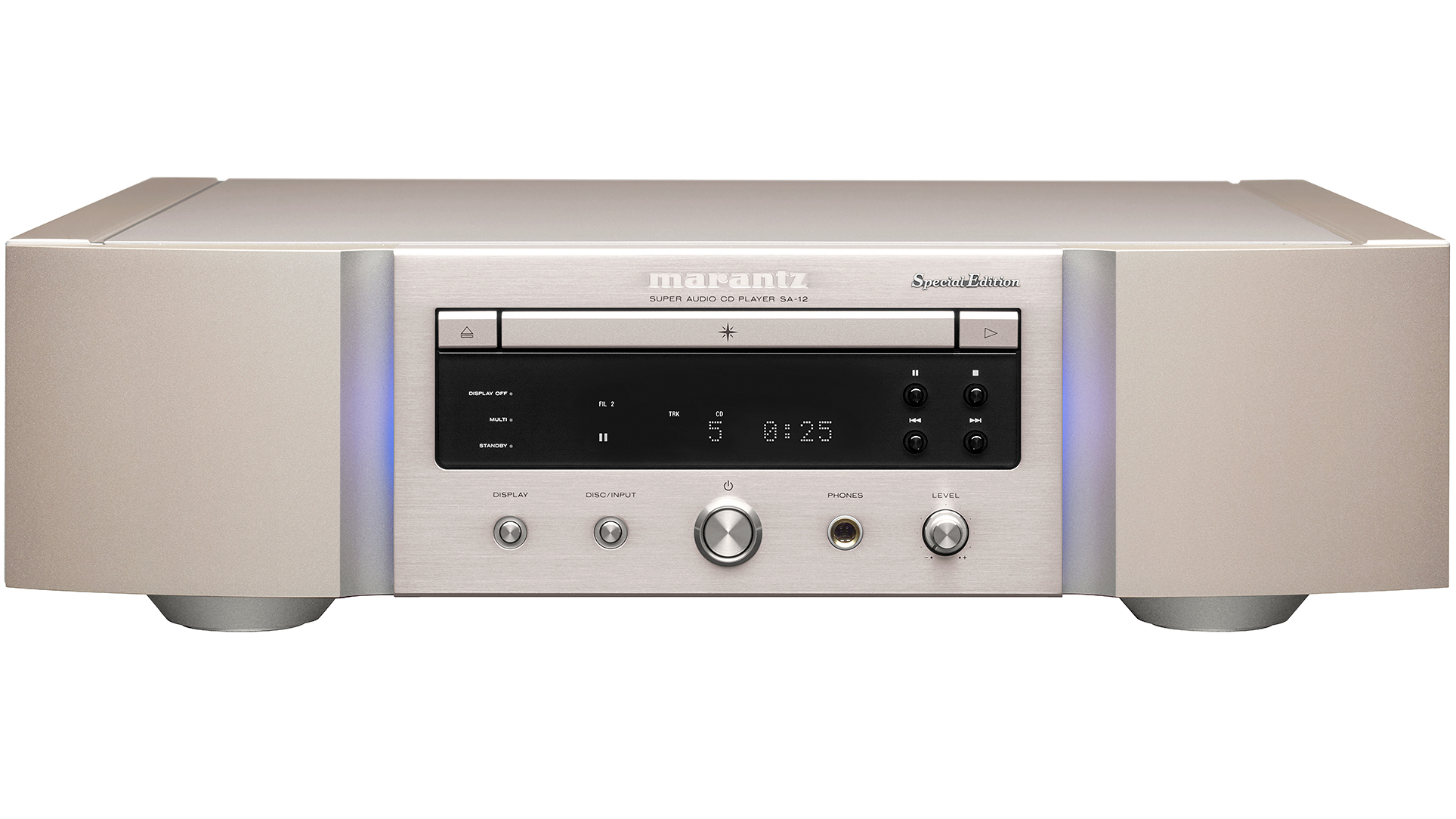
Unlike many modern CD and SACD players, which use transports not specifically designed to play either CDs or SACDs (usually a computer transport of some type) the disc mechanism inside the SA-12SE is one that was specifically designed for CD and SACD operation, as you’d probably guess for yourself if I told you that the mech was designated a SACDM-3. It’s not a new mech by any means, because it was in the Marantz SA-KI Ruby SACD player and also in a Ken Ishiwata ‘Signature’ model. It was designed by Marantz and is built in-house at Marantz’s own factory in Japan.
Obviously the SACDM-3 mechanism can play both commercially produced CDs and SACDs, but it can also play back discs you’ve recorded on your computer on DVD-R/-RW/+R/+RW or CD-R/-RW discs, in a variety of formats including MP3, WMA, AAC, WAV, FLAC, ALAC, AIFF and DSD. One thing it can’t do is play back multi-channel SACDs. It’s strictly only a two-channel mech. But this doesn’t mean that you can’t play an SACD that says it has 5.1 channels – it will play such discs, but only in two-channels.
I’ll be buying an argument if I write here that SACD is a ‘failed format’, but I think the facts would support that statement. Sure you can still buy SACDs, but they’re not common and very few have any music on them that was recorded in the last two decades. Sure SACDs have a more extended high-frequency response and greater dynamic range than CDs, but you can get this from downloadable high-resolution audio files. So why would you want an SACD player, rather than just a CD player? (Assuming, of course, that you don’t have an existing library of SACDs, in which case you DO need an SACD player.)
The answer is simply that the more modern SACD mech extracts the data stored on CDs a little more precisely than most dedicated CD transports, so there’s less error correction going on, and therefore better sound quality. (The other way to get around error-correction issues when using a standard CD transport is to buffer the data and, if necessary, re-read it, then release the corrected data from the buffer, but this is an expensive process, as you’ll find for yourself if you investigate the prices of the players that employ it.)
Then there’s the fact that many fans of SACD don’t think of it as a ‘failed format’ at all, but as an exclusive ‘cult format’ that offers superior value. Devoted SACD fan Coury Turczyn wrote on his website: “So why don’t I just invest in high-res FLACs from online stores like HD Tracks and play them through a nice DAC? Because they’re still too expensive and their resale value is zero. Meanwhile, new SACDs are still being published by boutique labels like Analogue Productions, ORG, Mobile Fidelity Sound Lab, and others. I’d much rather spend the same money on physical media that has a chance of retaining its value (or even going up) than a computer file that’s instantly worthless. Also, collecting things that are hard to find is fun. Pressing a button to get illegal downloads: boring.”
Which is not to say you can’t have the best of both worlds, because in addition to being able to play back SACDs and CDs, the SA-12SE is also able to play back hi-res files from your computer, either via its coaxial input or via its USB input.
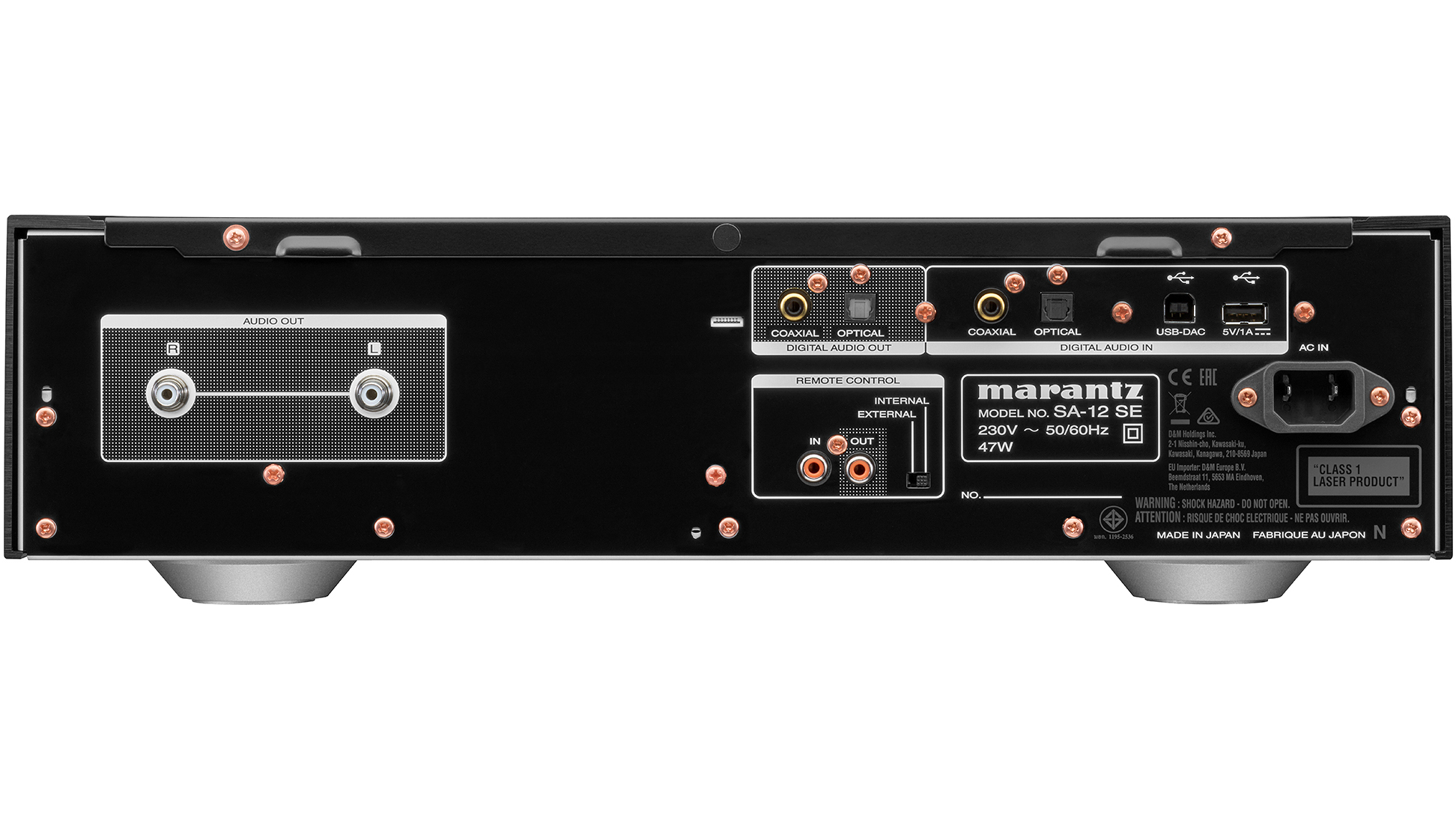
When you do this (PCM signals up to 384kHz/32-bit are accommodated, along with DSD256/11.2MHz), all these signals are are up-converted to DSD at 11.2MHz using Marantz’s proprietary MMM-Stream converter within the player, and the high-frequency signal produced is processed by the unique MMM-Conversion stage that’s used in place of a conventional DAC, to produce the analogue output. When you do use the ‘hardware’ inputs of the SA-12SE, the unit automatically turns off all the circuits related to the SACDM-3 optical disc mechanism in order to ensure optimal sound quality.
Marantz’s ‘MMM-Stream’ process replaces the oversampling filters normally used in digital to analogue conversion and allows the implementation of ‘Marantz Musical Mastering filtering’. Two different system clocks are used when up-converting, depending on whether the incoming signal is coming from the transport or from the digital inputs. The Sigma Delta Modulation process allows DSD signals to be passed to the conversion section in the form of a stream of high-frequency pulses.
As mentioned earlier, you can select between two different filters when playing back your music. Marantz says of Filter 1 that it has: “A very short but symmetrical impulse response, very precise soundstage and smooth tonal balance.” It says of Filter 2 that it has “very short pre-ringing – long post-ringing, neutral tonal balance – slightly brighter than Filter 1.”
These are not an overly informative descriptions but I guess it’s all in the proof of the pudding: listening to the filters and deciding for yourself which one sounds the best with the music you’re playing at the time is the only way to decide which filter should be used.
HDAMs
Marantz makes much of its use of ‘HDAMs’ and in the new SA-12SE, it uses its SA2 and SA3 versions. (The player’s headphone amplifier also uses HDAM-SA2 modules.) But what are they exactly?
An HDAM (the initials stand for ‘Hyper Dynamic Amplifier Module’) is a circuit that uses discrete components and is used in a place in the circuitry where most other manufacturers would use an integrated circuit called an op-amp (short-form for operational amplifier). Currently, Marantz makes its HDAMs in several quality levels – a standard HDAM, the HDAM SA2 and the HDAM SA3 (the latter delivering the highest performance of the three).
Ordinary ‘off-the-shelf’ op-amps offer different levels of performance, depending on how much you want to pay, but Marantz says its HDAM3s have a higher slew rate and less noise than even the very best op-amps, the result of which is, according to the company: “more dynamic, accurate and detailed sound.”
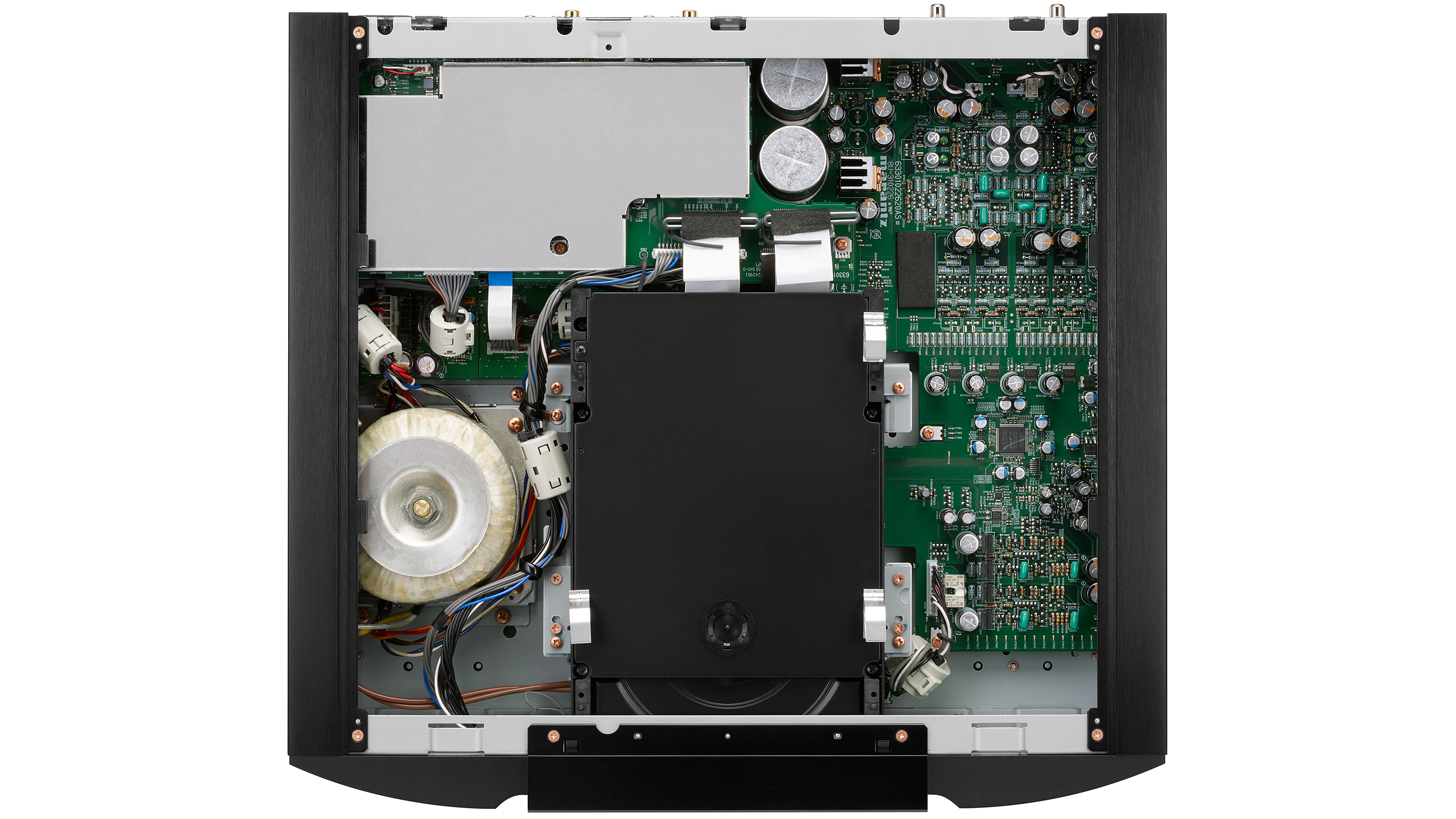
The circuitry also makes use of current feedback, rather than the more usual voltage feedback. Marantz says that using current feedback reduces the need for phase compensation. It also claims that current feedback is better-suited to the requirements of wide-bandwidth, high-speed (a.k.a. ‘hi-res’) music reproduction.
As for the op-amp itself, the circuit was originally so named because it was designed to perform mathematical operations, multiplication, division, addition and so forth back in the days when computers were analogue, not digital. It has a differential input, the ‘legs’ of which its internal circuitry keeps at the same voltage, so whatever voltage is at the (+) side of the op-amp’s input will be maintained at the same voltage as the op-amp’s (–) input – and that’s for both d.c. as well as a.c. voltages.
This enables an op-amp to be used as a buffer, an integrator, a non-inverting amplifier or an inverting amplifier. It’s an extraordinarily useful circuit.
Operation
Basic player operation is self-explanatory, because all the controls you’ll need to operate the player are right there on the front panel. Or, if you’d prefer to operate the player from the comfort of your own couch, on the very handsome remote control that comes standard with the player.
The only operation that requires a little bit of hands-on is if you want to use the SA-12SE SACD in conjunction with your computer in which case you’ll have to load the appropriate driver (at least you will if you have a Windows computer – Mac owners won’t have to do anything but plug it in).
If you do have to load a driver, you don’t have to go searching on the internet, or email the manufacturer, Marantz provides the driver on a CD-ROM. On the same disc you’ll find an electronic version of the excellent ‘Owners Manual’ that Marantz provides in hard-copy form as well.
If you do have to use the remote control, it’s a stunner, because it’s the same RC005PMSA device Marantz supplies with its top-line models. The rear is silvered plastic, but the top of the remote is made from brushed silvered aluminium that’s 2mm thick and all the push-buttons on it are high-quality. It’s also supplied with two high-quality AA alkaline batteries, which means you won’t have to supply your own until they run flat.
The remote has two modes – CD and AMP – so if switched to AMP it can also be used to control the Marantz SA-12SE amplifier mentioned previously (as well as other Marantz amplifiers). The remote gives access to the SA-12SE’s track programming options, its random and repeat playback modes and more.
Two features I would have liked to see on the SA-12SE are balanced outputs and the ability to control the output voltage, but the fact that they aren’t there isn’t any kind of deal-breaker.
If you have not used an SACD player previously, you will have to get used to the slow load times when loading CDs, because when you load a CD, the SA-12SE needs around 30 seconds before play commences, whereas with an SACD, playback starts after only a 17 second delay. Marantz seems to have sped-up the ‘play to drawer open’ time, however, because this takes only six seconds, either for CD or SACD.
Listening
Shocked to my core by the retirement of Daft Punk, my personal homage was to let them be the very first album I played on the Marantz SA-12SE. It seemed most appropriate to start with Aerodynamic, the second track on what I reckon is their best album, ‘Discovery’, from 2001. This track seemed most appropriate because it starts off with a mournful bell toll – you know, from the John Donne’s poem: “Send not to know for whom the bell tolls, it tolls for thee.”
Then it launches into that iconic riff with its sub-bass line that will have your woofers leaping from their cabinets if you’ve let the volume stray too high. Next comes that high-pitched riff that will have your tweeters begging for mercy. Then it all comes together in a miasma of convoluted sound. Daft punk indeed.
On Harder, Better, Faster, Stronger, Daft Punk play all their usual sonic tricks (the one I hate the most is when they make the music sound as if it’s coming from a radio) including using a vocoder for the vocals. But at the same time listen to the cymbal sound, which is wonderfully captured and delivered perfectly by the Marantz SA-12SE. This is also a great track for finding out how fast the speakers in your system can start and stop, thanks to the studio chop.
If you’d like a gentle introduction to this album, listen to Something About Us before you listen to anything else. It’s a lovely track. You might then go on to Night Vision and then to Veridas Quo with its fabulous organ progressions after which you can play the other tracks in any order you like... and of course I was able to do exactly this thanks to the ability to program the Marantz SA-12SE to do exactly this. Yeah, I know you can do this in software if your music is stored on NAS (or elsewhere) but you might not enjoy this type of playback.
For something a bit less daft, I switched to my current everyday listen, which is ‘An Overview on Phenomenal Nature’, the new album from Cassandra Jenkins with its melancholy sound, melancholy lyrics and sympathetic playing. The layered sounds are so well-recorded that you can hear exactly where all the instruments are located, and exactly how they sound because, despite being rather lavishly produced, the instruments have been recorded exactly ‘as they sound’.
The saxophone sound (Doug Wieselman), in particular, is stunning. So too is the sound of the fret-less bass of Annie Nero. You’ll hear all this if you listen to the CD on the Marantz. Hopefully it will have been re-pressed by the time you read this. Only 500 copies initially? What was she thinking? This album was always going to be a hit. (If you can’t get it on CD, it’s also available on vinyl and via download.)
It was then on to using the Marantz SA-12SE to listen to Natalie Mering’s latest album ‘Titanic Rising’, released under her pseudonym, Weyes Blood (apparently a reference to Flannery O’Connor’s novel Wise Blood, but a reference whose meaning eludes me) and the Marantz was on top of the lush sound of the opener, A Lot’s Gonna Change, right from the outset. If you can tear yourself away from the extraordinary sound of her voice, and the emotive lyric, listen to the high-pitched accompaniment at 0.59, which the Marantz delivers with ethereal beauty (lesser players render it coarsely).
Andromeda, which follows, has some depthy sounds that will test out your bass drivers, and the Marantz had no problem maintaining the complex rhythms and the blistering pace, plus you can hear the tonality of all the instruments, even when all are playing in unison. Then listen to the piano intro to Everyday. Played on the lowest octave of the keyboard the twang of the strings is uncannily true to life. A little further on, the hand-claps are also reproduced with an authenticity that escapes lesser machines, both CD and SACD.
The track Movies is a great test for your system’s ability to separate channels and achieve stereo imaging, with the image shifting subtly under a programmed synth arpeggio, but the complexity proved to be child’s play for the Marantz SA-12SE, which didn’t skip a beat delivering it exactly as it was recorded. Again the production is lush, and the sound is great, but I’m not such a fan of the music: I tired of the arpeggiation, the lyrics aren’t her best and the melodic lines are stodgy. If you’d like to really appreciate Mering at her best, I’d recommend you listen to her album ‘Front Row Seat to Earth’ from back in 2016.
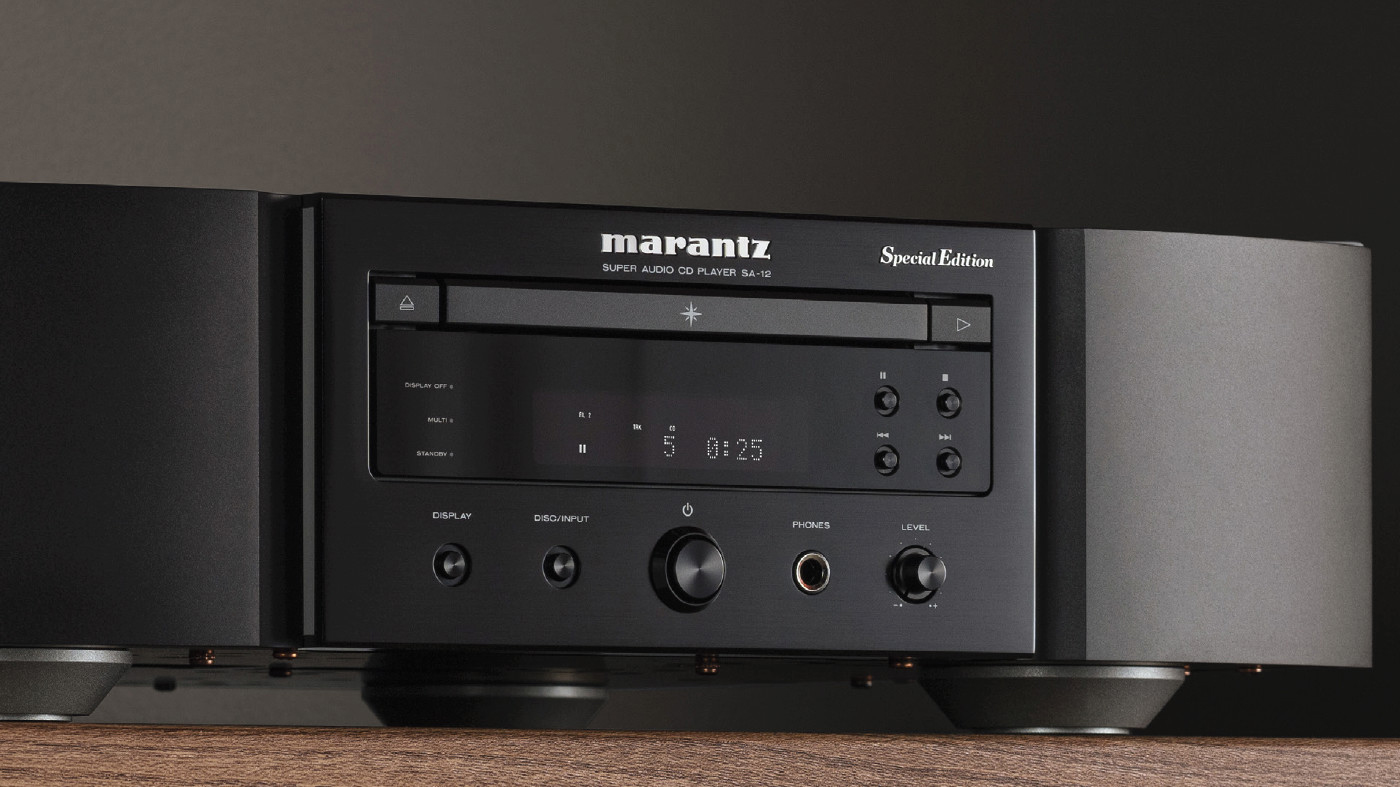
Of course there’s nothing like a full orchestra to fully test out an SACD player’s (or any playback device’s) ability, and what better than Mahler’s mighty second symphony, ‘Resurrection’, with Adriana Kucerova (soprano), Christianne Stotijn (mezzo-soprano), the London Philharmonic Orchestra and the London Philharmonic Choir under the baton of Vladimir Jurowski, recorded at London’s Royal Festival Hall in September 2009?
Perhaps what makes this recording so magical is that unlike many conductors, Jurowski actually sticks to the instructions written on Mahler’s score, so you’re going to hear a completely different Resurrection to most that have been recorded (and one that’s the better for it). The recording quality is wonderful, particularly given the constraints of the live nature of it, witness the second movement’s string ostinato and the entry of the basses reminding us of the first movement.
The presentation of the sound by the Marantz SA-12SE was flawless, clearly evidenced by the sound of the violin and flute in the third movement, and in the way you can count the trumpets that are playing close harmony in the trio. The finale, which is always wonderful, is here heard to perfection such that whereas my eyes usually well with tears when listening to it, this audition had them overflowing and rolling down my cheeks. This is truly exceptional high-fidelity performance at its best.
My listening experiences using the Marantz’s external digital inputs really duplicated what I heard when listening to CDs and SACDs: the sound was superb. I did run across a tiny little technical glitch when playing back from a USB stick, which was that I could only access files in its root directory, but this may have been an issue with the way I transferred my music to the stick.
Final verdict
The build quality of the Marantz SA-12SE is second to none. This is a component that will make you smile with satisfaction every time you look at it. Look inside it and even if you’re not an engineer, you’ll appreciate the attention to detail in the alignment of the resistors, capacitors and other circuit components and the layout of the printed circuit boards.
That smile of satisfaction will become even bigger whenever you listen to the Marantz SA-12SE because the sound is superb. It will extract the ultimate aural fidelity from any disc (or file) you play.
Full lab test results
Newport Test Labs measured the output voltage of the Marantz SA-12SE as 1.9950 volts from the left channel and 1.9952 volts from the right channel, a very healthy voltage that will be more than sufficient for any ancillary components.
As you can see from the closeness of these two voltages, the balance of the left and right channels is exceptionally good, one of the best results I can remember seeing, such that the channel balance is 0.001dB. This would not only be totally imperceptible, but is also well within measurement error limits for this particular test.
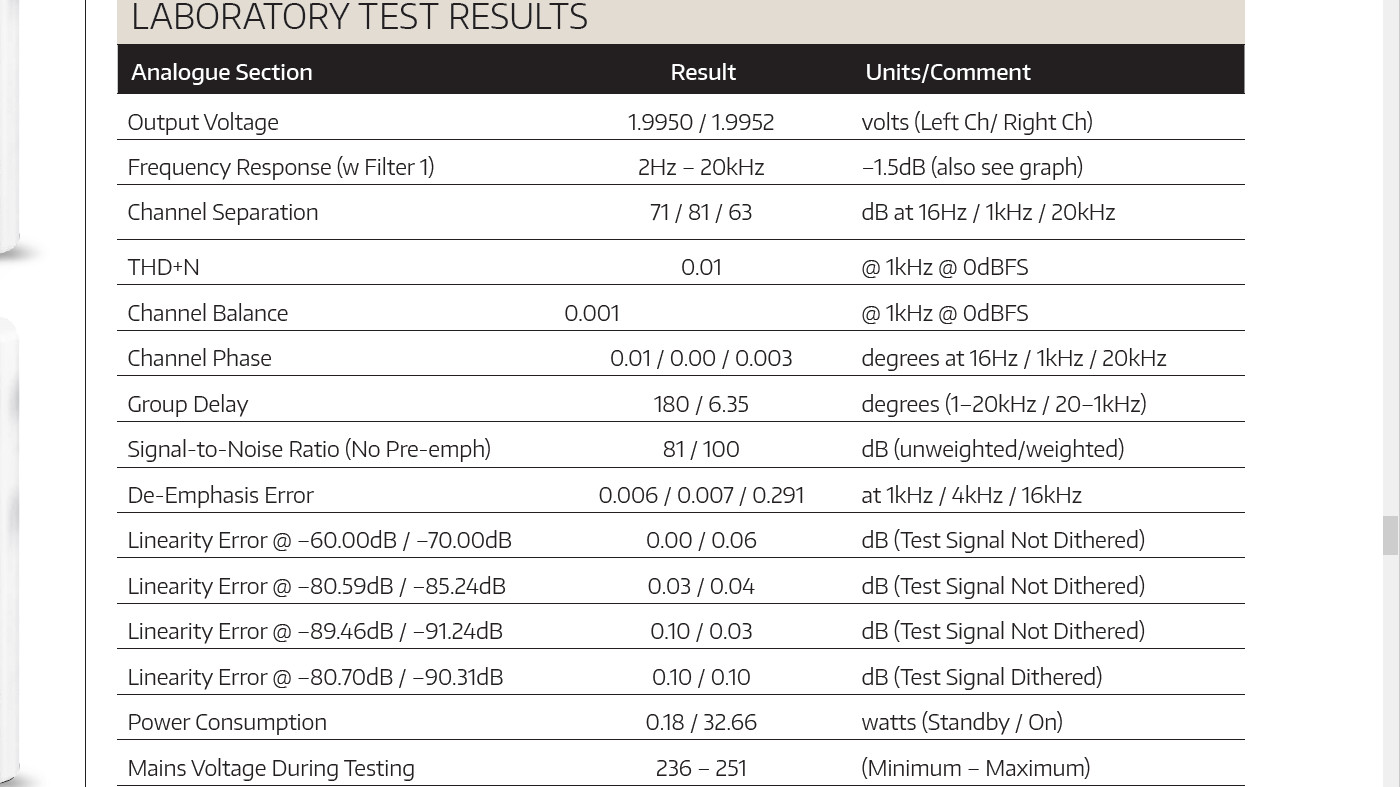
Channel separation was not quite in the same league, as you can see from the tabulated figures, but all three results (71dB at 16Hz, 81dB at 1kHz and 63dB at 20kHz) are more than required for the Marantz SA-12SE to deliver excellent stereo separation and accurate imaging (this last in combination with the channel balance results, of course).
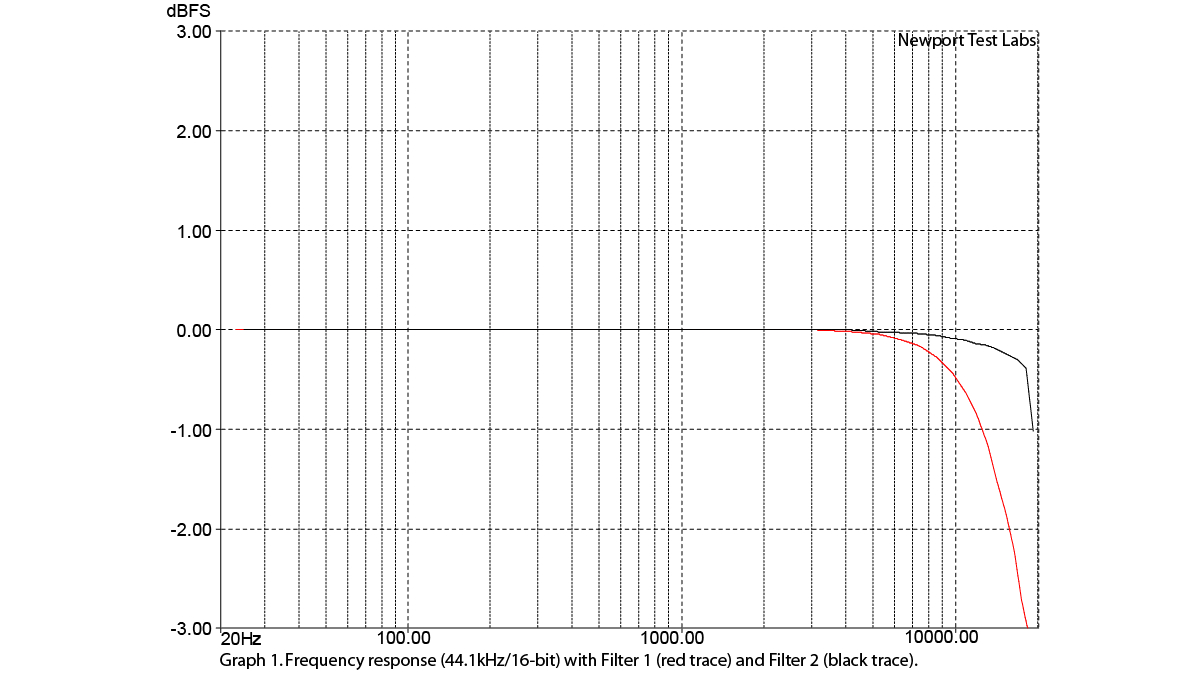
Graph 1 shows the frequency response of the Marantz SA-12SE for both Filter 1 (red trace) and Filter 2 (black trace). As you can see the response depends on which filter you use. Filter 1 is a linear phase, slow roll-off type that trades minimal pre/post ringing against image rejection and a roll-off of –4.9dB at 20kHz when playing CDs. (You can’t quite see this down-point on the graph because the lowest graphing line is at –3.0dB.)
You can see that the frequency response with Filter 2 is ‘flatter’, extending out to be just 1.45dB down at 20kHz (and –4.9dB at 45kHz and –20dB at 90kHz). SACD/DSD64 files were –0.7dB at 20kHz, –3.0dB at 50kHz and –13dB at 100kHz. (I put ‘flatter’ in inverted commas, because both responses are superbly flat across the audio band.)
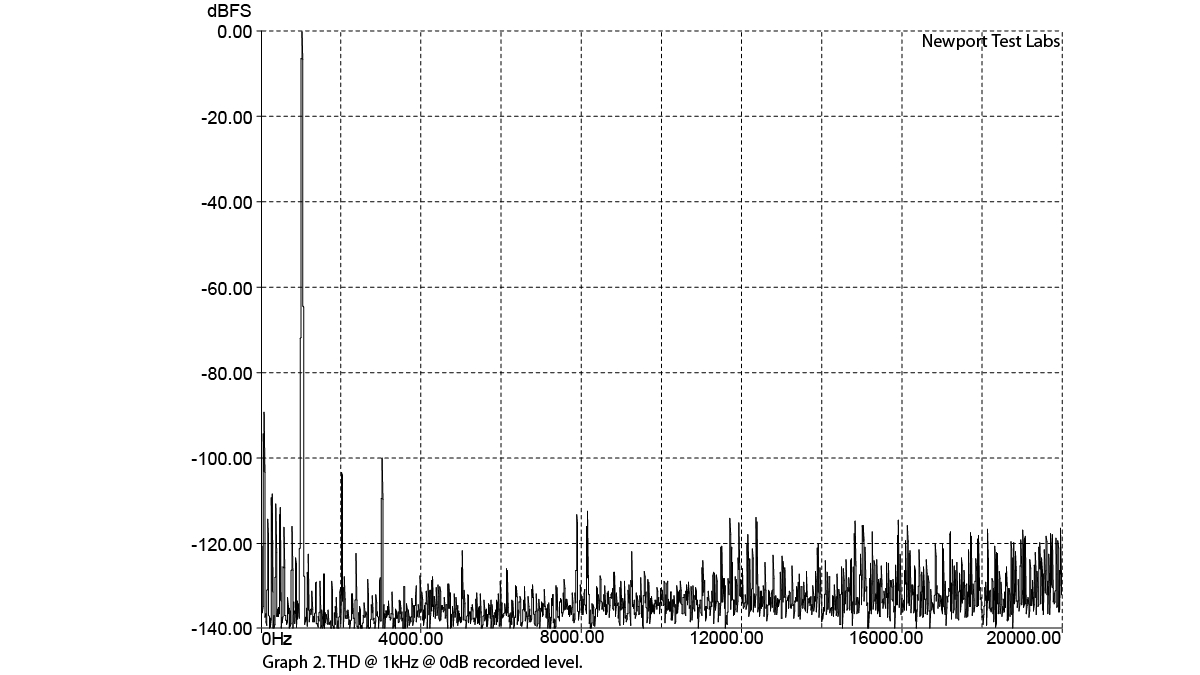
Graph 2 shows THD and noise for a 1kHz (44.1kHz/16-bit) test signal at 0dB recorded level. The result is, as you can see, excellent. The two obvious harmonically-related distortion components (the second and third) are both more than 100dB down (0.001% THD). You can see some non-harmonic distortion components up higher, initially either side of 8kHz, then 12kHz, then higher, but all these are more than 115dB down (0.0001778% THD).
Noise across the majority of the audio band is more than 120dB down, but you can see that below 1kHz, there’s noise above this level, with a noise spike at 50Hz that’s at around –90dB.
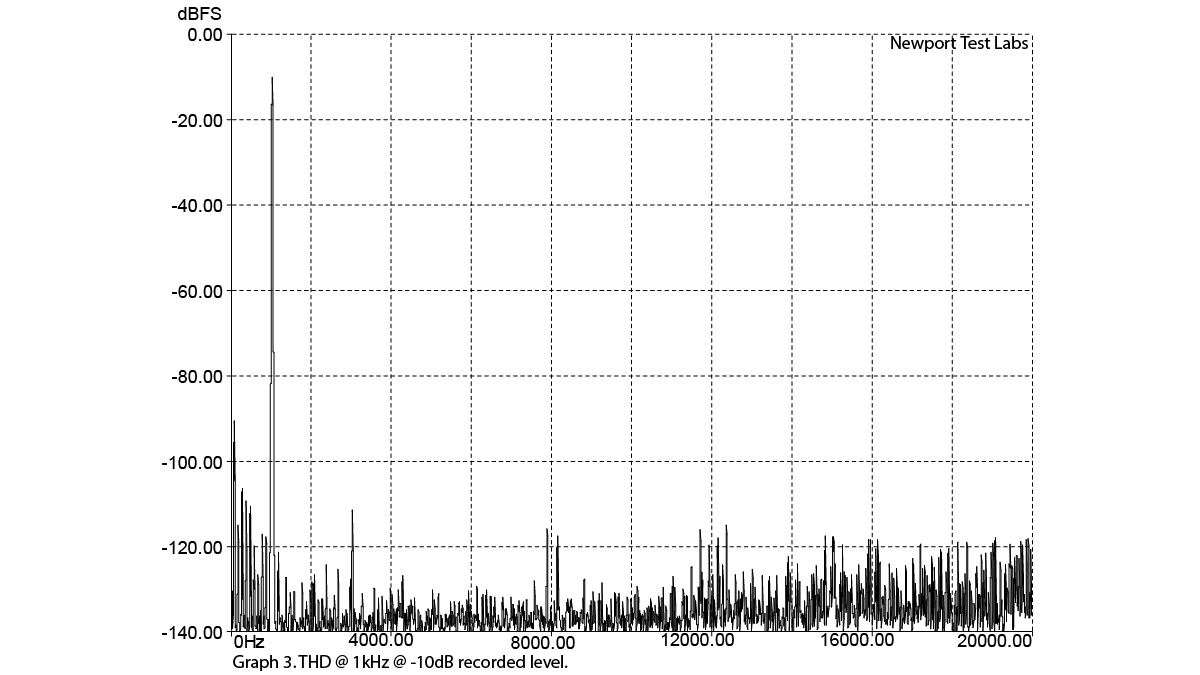
Graph 3 shows THD & Noise for a 1kHz (44.1kHz/16-bit) test signal at –10dB recorded level. Again, the Marantz returned spectacularly good performance with only one harmonically-related distortion component (third harmonic at 3kHz) at –112dB (0.0002512% THD). Again, non-harmonically-related distortion components are visible, but they’re all down close to –120dB (0.0001% THD). Except down close to mains frequencies and up to 1kHz, the noise floor is down around –140dB.
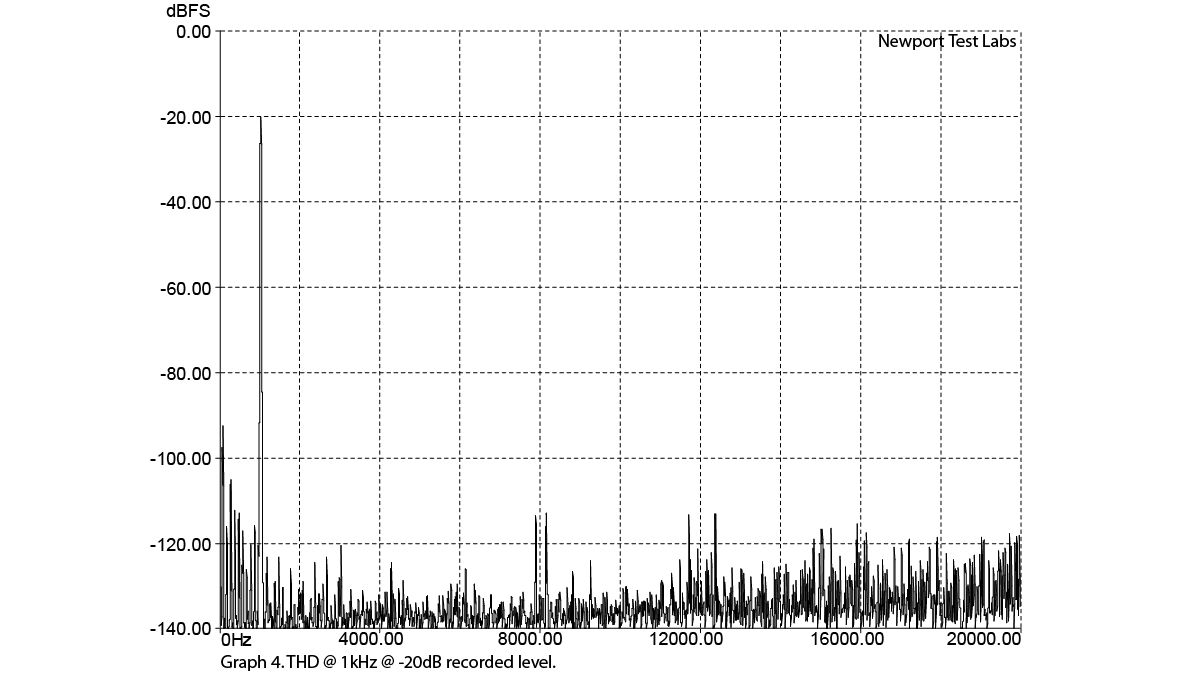
In Graph 4, which shows THD & Noise for a 1kHz (44.1kHz/16-bit) test signal at –20dB recorded level, the third harmonic distortion component has dropped down below –121dB, but the non-harmonic components have remained at essentially the same levels as previously.
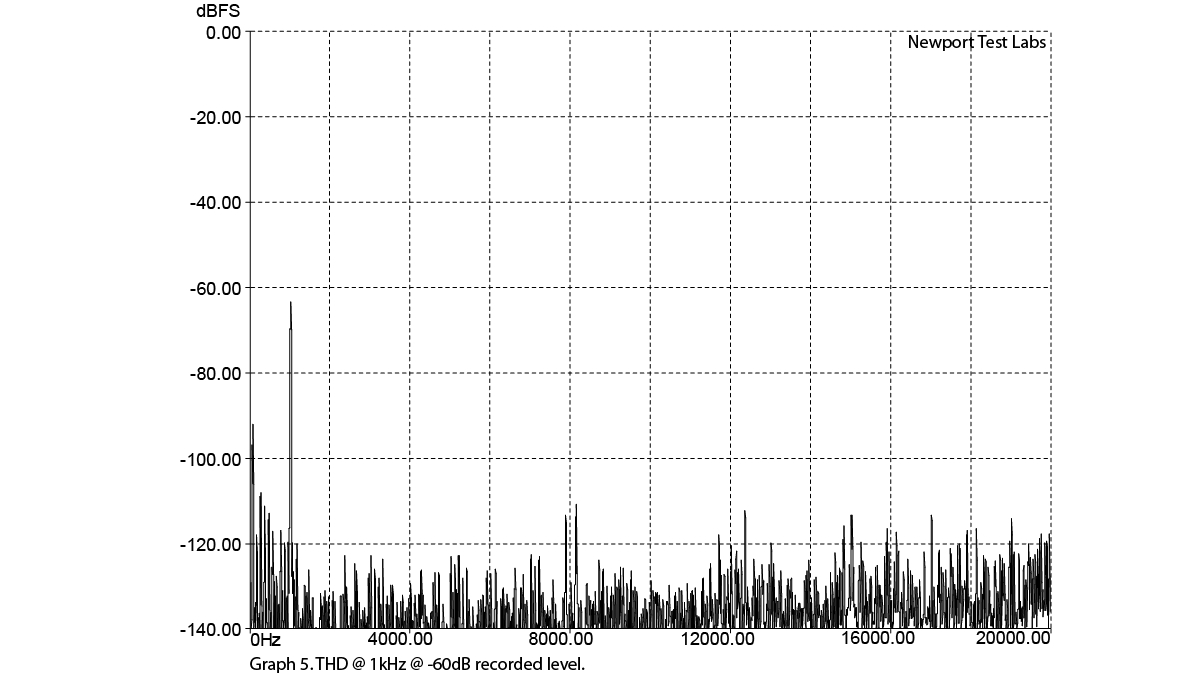
Graph 5, which shows THD & Noise for a 1kHz (44.1kHz/16-bit) test signal at –60dB recorded level is a surprising result because the noise floor is essentially unchanged, so the conversion process is not introducing spuraie. Marantz appears to have made significant improvements to its MMM-stream digital-to-analogue conversion process.
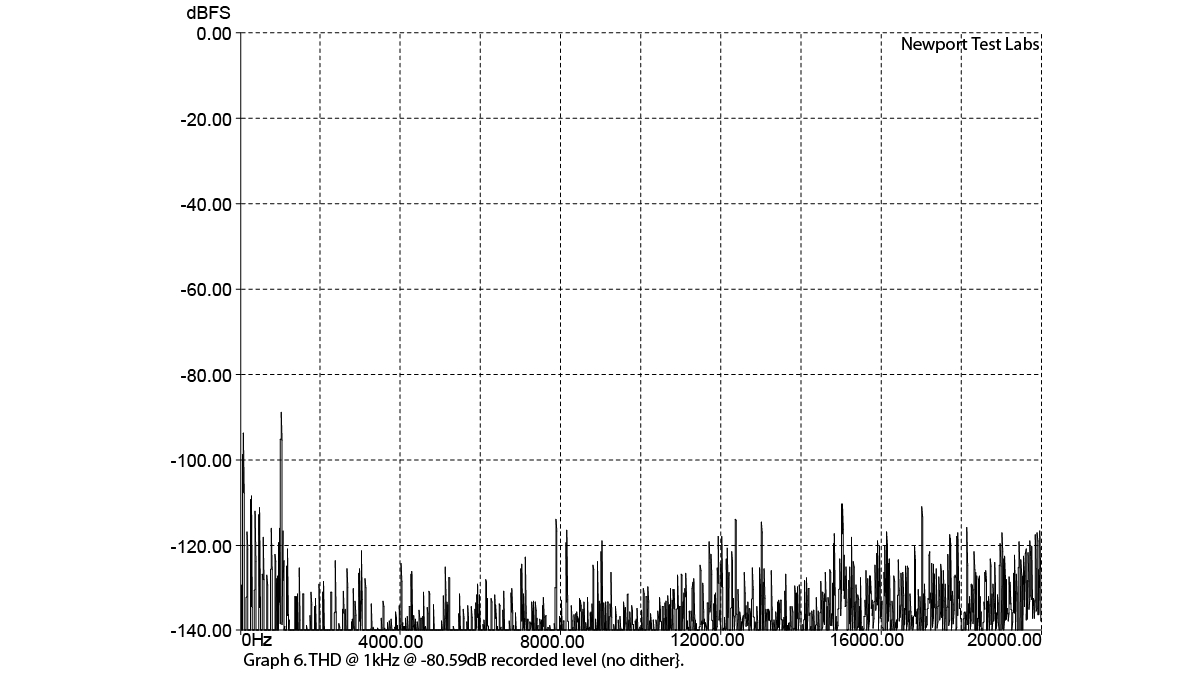
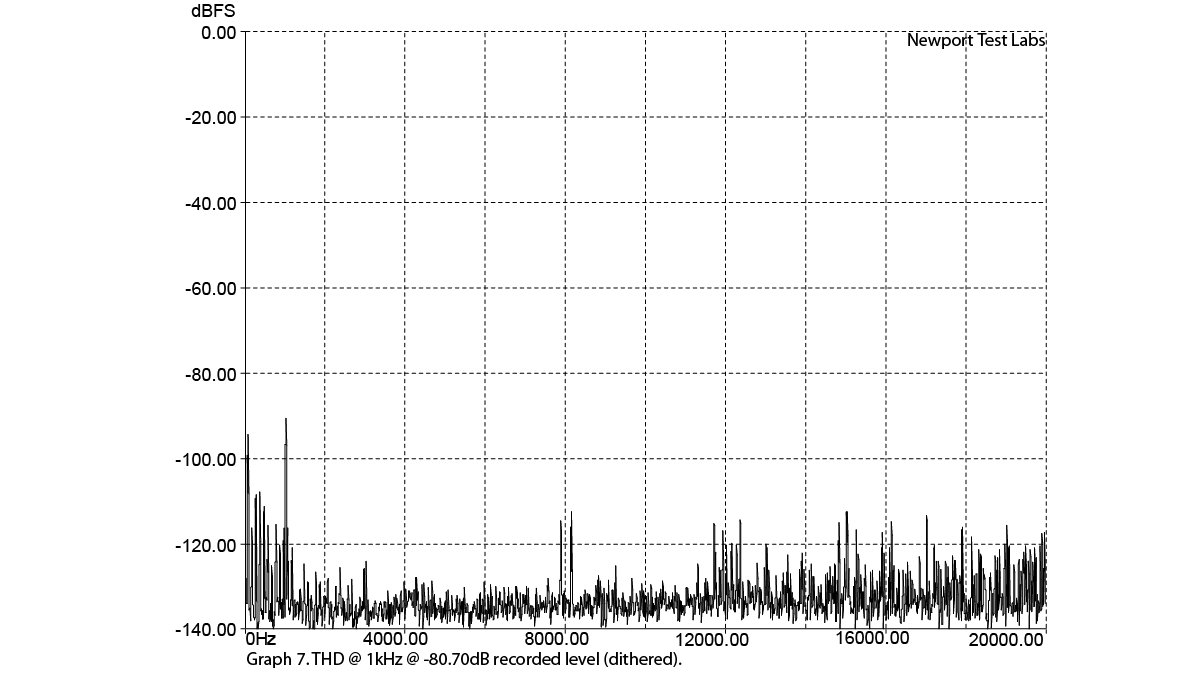
The same is true for Graphs 6 and 7 which show the effects of dithering the test signals (no dither for Graph 6, dither for Graph 7). Normally I would expect to see a considerable rise in the noise floor with the dithered test signal but, as you can see for yourself, this didn’t happen with the Marantz SA-12SE – it stayed down around –140dB.
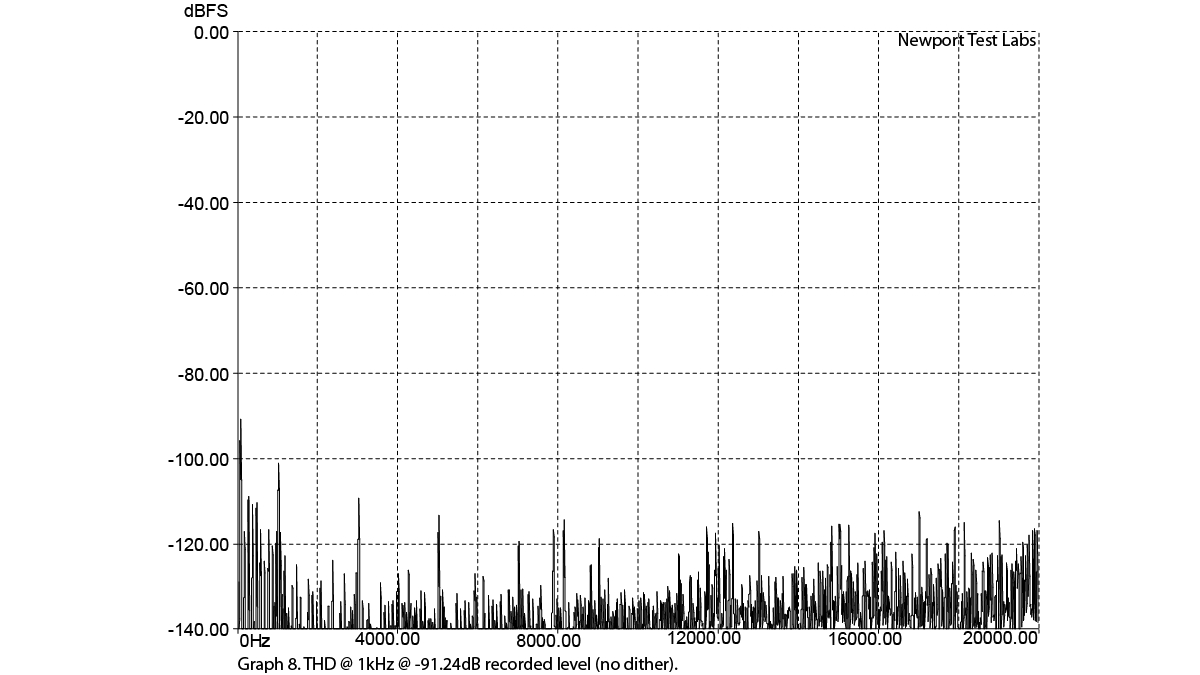
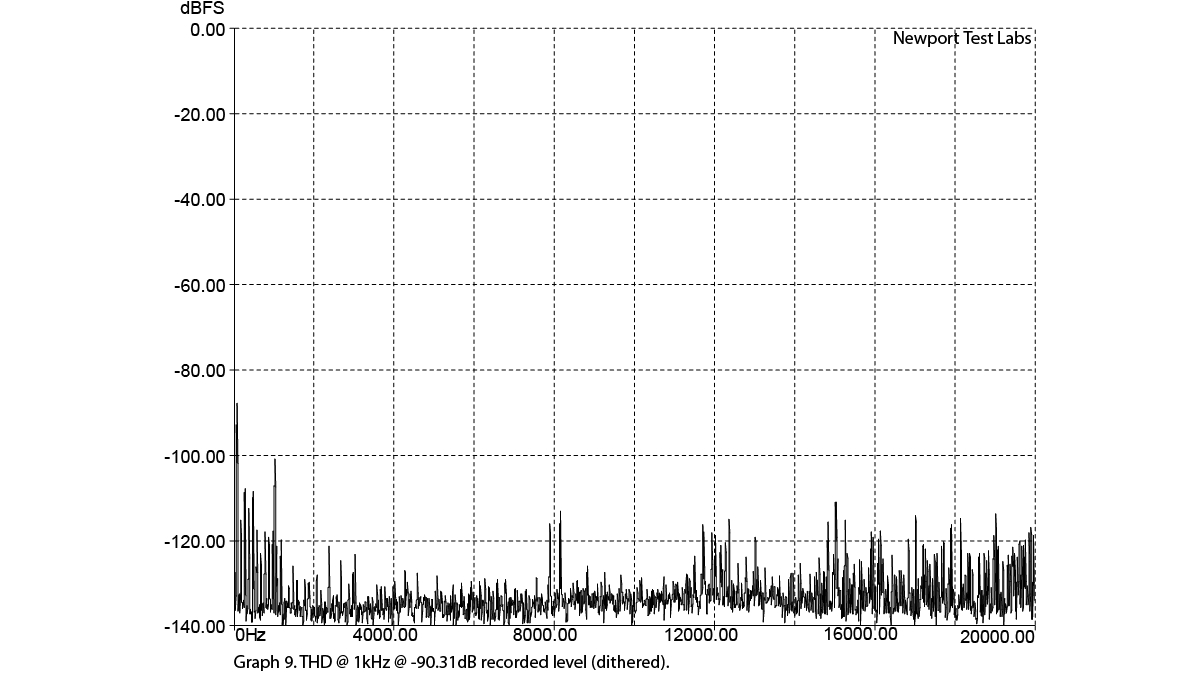
Again, on Graphs 8 and 9, when the test signal was more than 90dB down the same result was noted. Graph 8, without dither, shows the ‘grass’ across the noise floor introduced by the DAC’s non-linearity, while Graph 9 shows that the dithered signal removes the non-linearities but not at the expense of an increased noise floor.
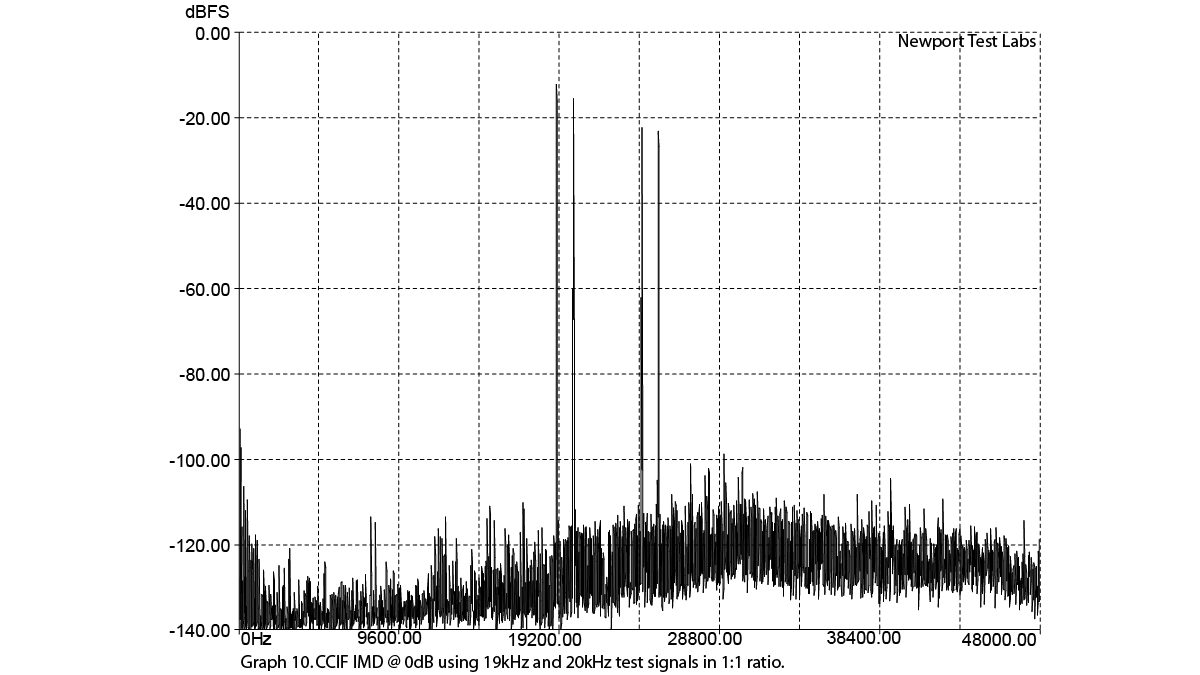
Intermodulation distortion (CCIF) was extremely low, as you can see from Graph 10. The two signals to the left are the test signals at 19kHz and 20kHz and you can see that there are no sidebands, nor has a ‘phantom’ unwanted difference signal been regenerated down at 1kHz, as is usually the case. The two signals to the right of the test signals are images caused by the digital-to-analogue conversion process Marantz is using.
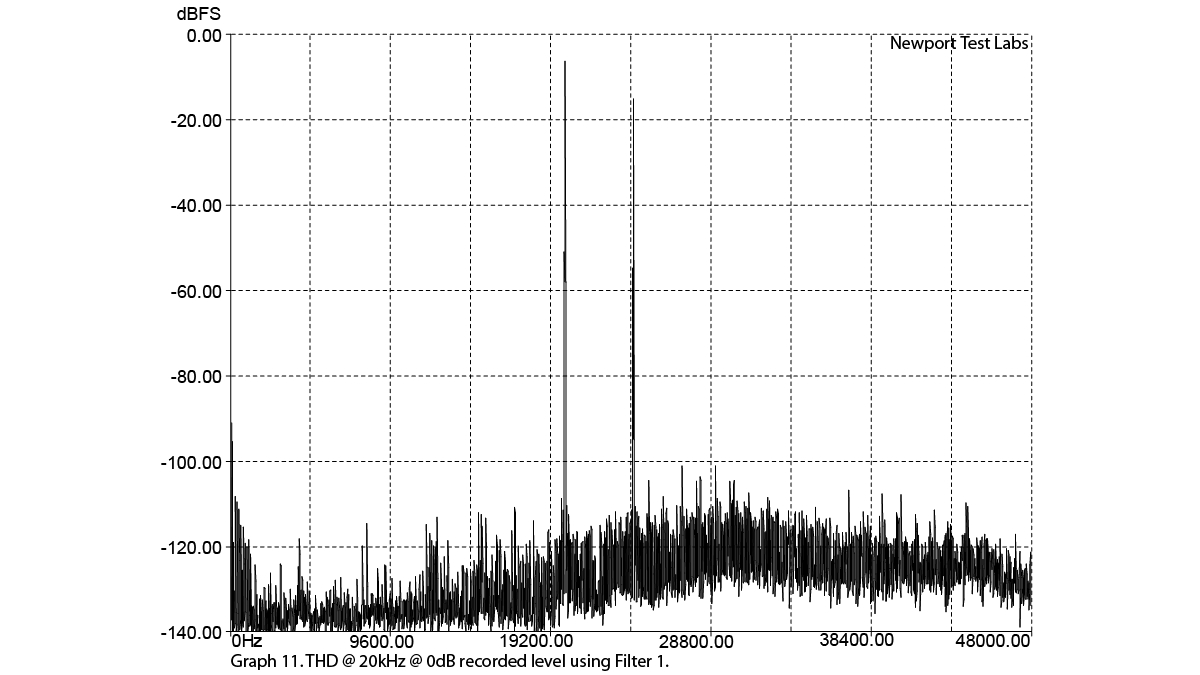

Graphs 11 and 12 show the effect of the Marantz’s two filters on frequencies above 20kHz, using a 20kHz test signal. You can see the image of the signal is attenuated far more by Filter 2 than it is by Filter 1.
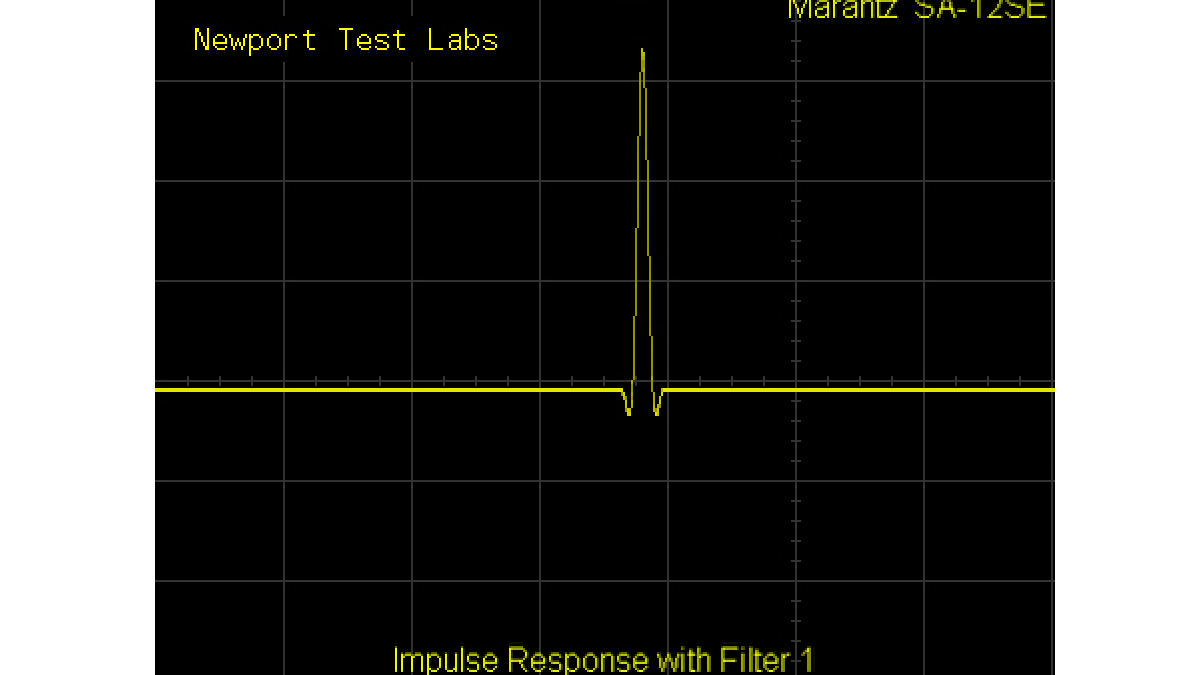
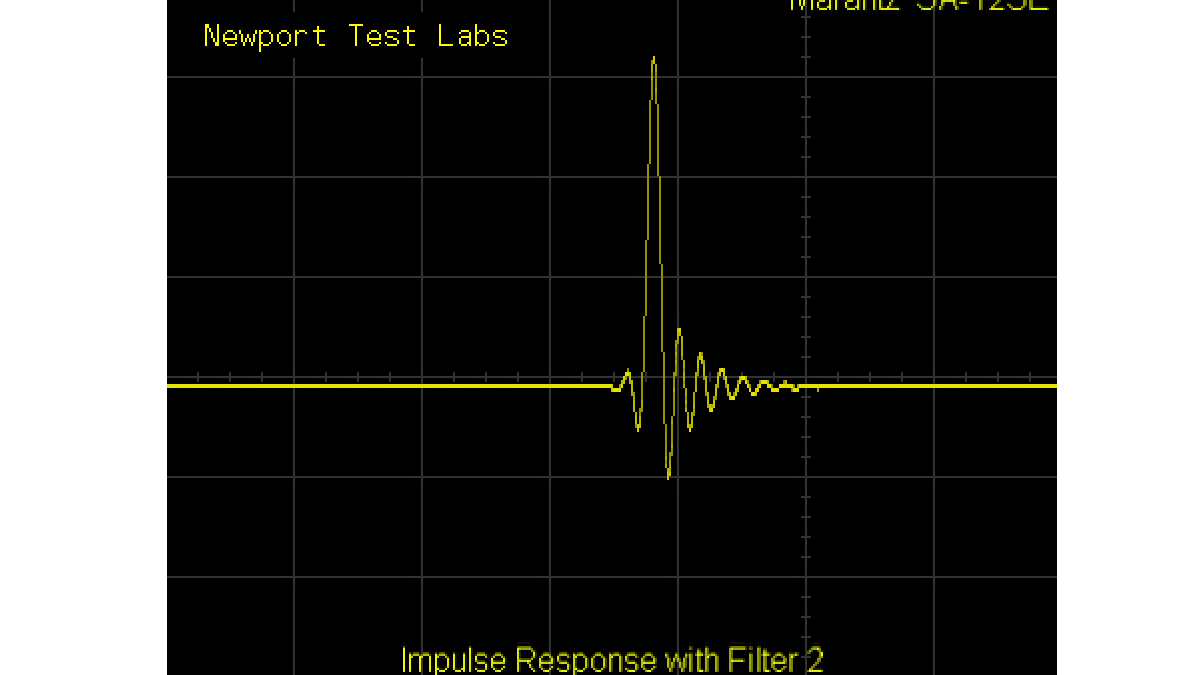
The effect of the filters on an impulse is shown on the two oscillograms. You can see that although Filter 1 gives a very clean impulse, there’s time-reversed ringing present (albeit almost non-existent) and almost no negative-going waveform at all.
Filter 2 has a more significant time reversed component, increased ringing overall and a significant negative-going waveform component.The same effect can be noted on the square waves captured by Newport Test Labs.
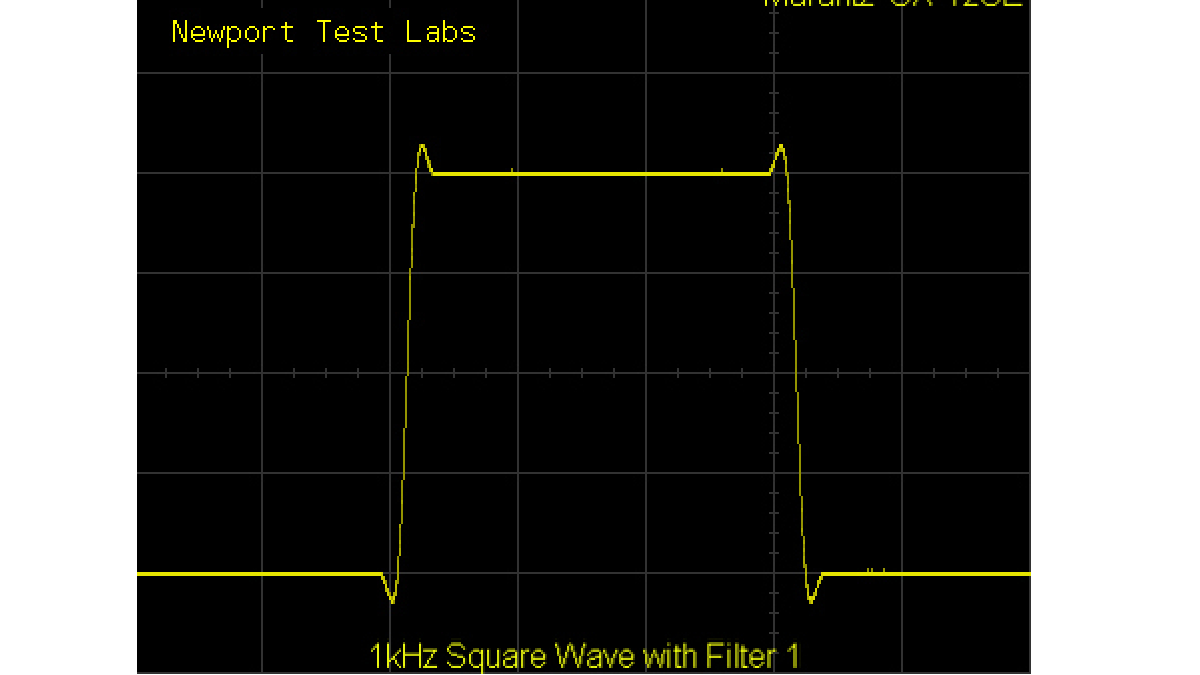
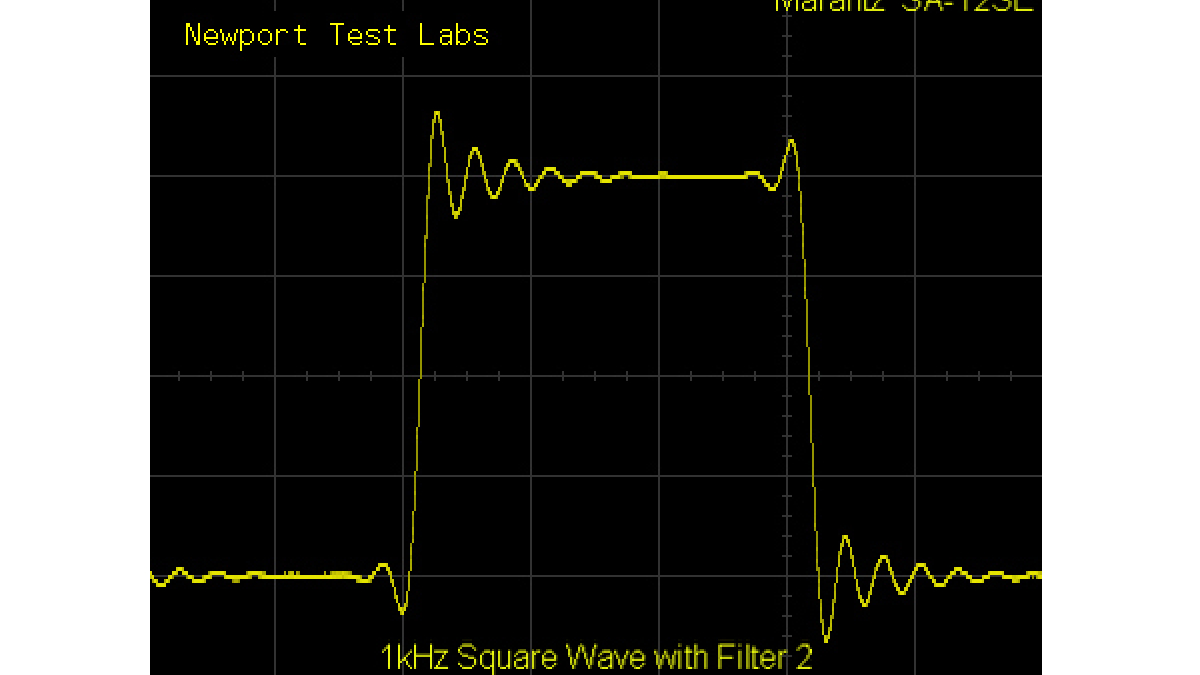
Other than not being entirely ‘square’ due to the high-frequency cut-off necessitated by the sampling rate (44.kHz), the square wave reproduced by using Filter 1 looks the most like it came from a square wave generator. Interestingly, although there’s significant ringing introduced by using Filter 2, the time-reversal is not extensive, extending only around half-way along the tops and bottoms of the square wave.
At just 0.18-watts, standby mains power consumption was far lower than the Australian government’s mandate of 0.5-watts, and while the 32.66-watts drawn from your mains power while the player is operating is a little higher than I might have expected, it’s less than your average light bulb, so not an issue.
It is truly gratifying to discover that Marantz’s engineers are not sitting on their laurels and have made significant improvements to the company’s unique digital-to-analogue conversion process – improvements that are plainly evidenced by the superior measured performance of the Marantz SA-12SE.
Australian Hi-Fi is one of What Hi-Fi?’s sister titles from Down Under and Australia’s longest-running and most successful hi-fi magazines, having been in continuous publication since 1969. Now edited by What Hi-Fi?'s Becky Roberts, every issue is packed with authoritative reviews of hi-fi equipment ranging from portables to state-of-the-art audiophile systems (and everything in between), information on new product launches, and ‘how-to’ articles to help you get the best quality sound for your home. Click here for more information about Australian Hi-Fi, including links to buy individual digital editions and details on how best to subscribe.
